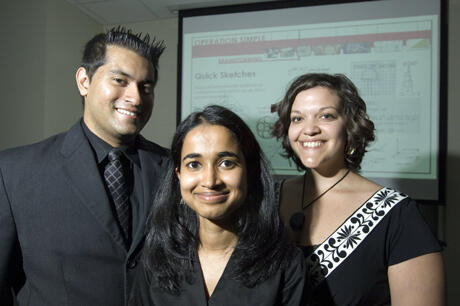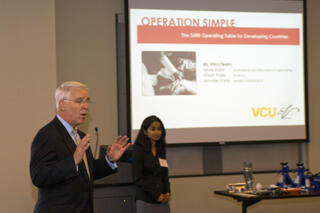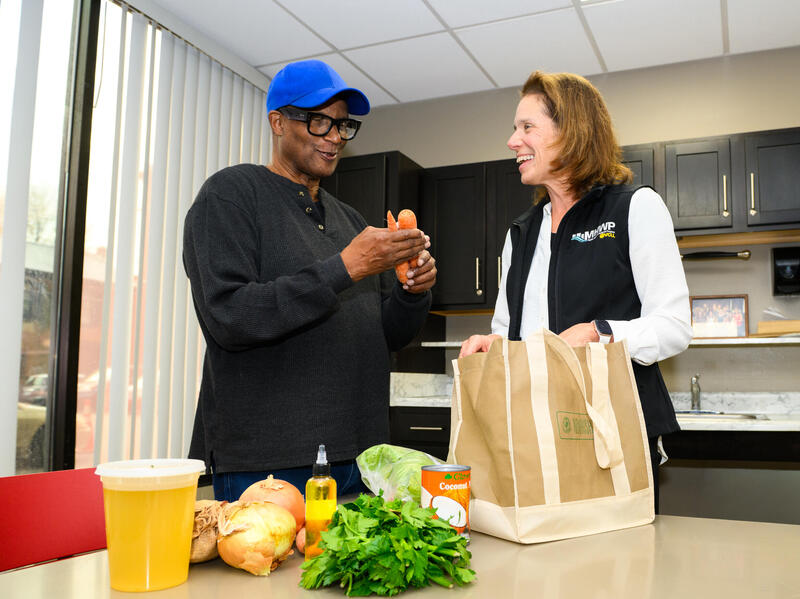May 12, 2008
Concept phase of da Vinci Center project unveiled: Operating table for Third World Countries for $500
Share this story
Da Vinci clip #1
Da Vinci clip #2
Da Vinci clip #3
Da Vinci clip #4
Da Vinci clip #5

Virginia Commonwealth University student Seule Kabir, a native of Bangladesh, has seen firsthand the lack of resources that doctors face in developing countries. In particular, the need for an affordable operating table struck her as a common thread that ran through the hospitals of her home country.
For optimal results in surgery, patients should be on a raisable, movable and partitioned operating table. However, a standard operating table can cost anywhere from $5,000 to $30,000, a price that leaves most hospitals in Bangladesh with just one table to accommodate their surgical schedules.
In response, Kabir, a graduate student in biomedical and mechanical engineering, and two fellow graduate students, Hitesh Patel from the VCU School of Business, and Jennifer Farris from Interior Design in the VCU School of the Arts, have developed a concept for reducing the prohibitive cost of operating tables in economically disadvantaged parts of the world.
The project, “Operation Simple: The $500 Operating Table for Developing Countries,” last week became the first to be publicly unveiled by VCU’s da Vinci Center for Innovation in Product Design and Development, a program that brings together students from VCU’s schools of Engineering, Business and the Arts.

Russell Jamison, Ph.D., dean of the VCU School of Engineering, provided background on the da Vinci Center to the audience, which included James Neifeld, M.D., the chair of surgery in VCU’s School of Medicine; Michael Sesnowitz, Ph.D., dean of the VCU School of Business; and representatives from Stryker Corp., a manufacturer of medical equipment, including operating room tables.
The center poses the question, “What can the da Vinci Center do within its scope to address problems of societal need both in the United States and globally?” Jamison said.
“From those conversations came the beginning of an idea of doing something in developing countries in which technology and design and business could perhaps create a game changer in the lives of individuals in these countries,” he said.
Kabir, Patel and Farris spent the spring semester designing a prototype table. The team’s research included Kabir visiting with hospital administrators in Bangladesh to better determine their specific needs.
The engineering for the table that the team conceived includes hydraulics, a gimbal and a pawl and ratchet hinge. From a design perspective, it would use readily available commercial products to facilitate movement and flat packaging for ease of shipping and assembly. The recommended business model would be a hybrid similar to that of furniture mass producer IKEA, ultimately featuring a suite of add-on features for the tables.
Phase II of the project, scheduled for the fall semester, will involve developing the engineering aspects of the table to ensure that it can support 300 pounds — the industry standard. Phase III, in spring 2009, will focus on production and marketing of the table.
Subscribe to VCU News
Subscribe to VCU News at newsletter.vcu.edu and receive a selection of stories, videos, photos, news clips and event listings in your inbox.







